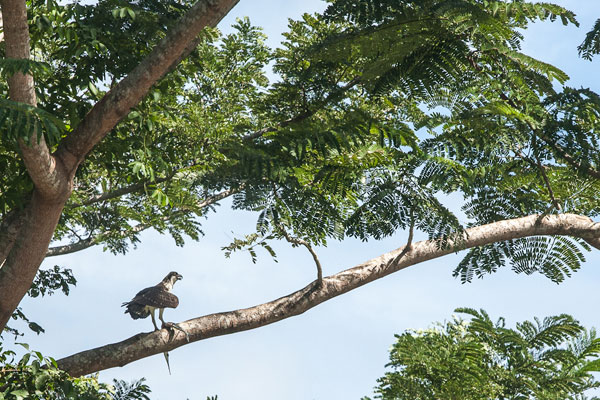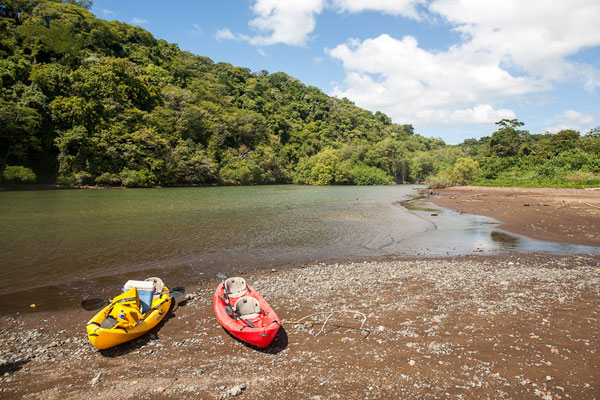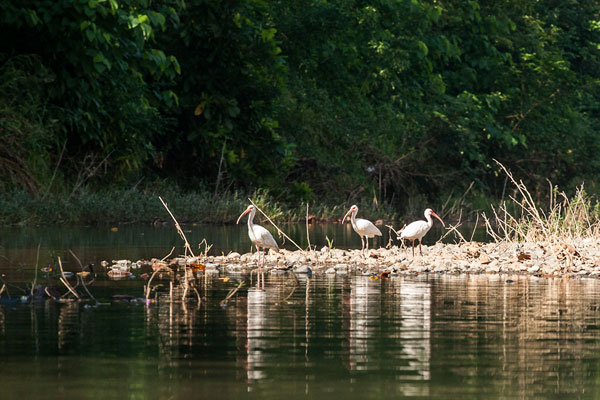
An osprey feasts on a fish.
It was a morning of peace and tranquility going with the flow down Rio de Ora river, watching Jesus Christ lizards scurry across the surface of the water and spotting birds overhead, as well as monkeys and iguanas.
A two to three-hour kayak tour about 5 kilometers down the river through the mangroves is one of the most popular tours available in the Samara-Carrillo area, according to William Juarez, tour operator with Carrillo Tours. He attributes the popularity of the tour to its relatively low cost, around $45, with local guides; along the river visitors see many of the same species of animals and plants that they would see in Palo Verde National Park at a lower price, he said.

The river meets the ocean at Camaronal wildlife refuge.
Rene Sanchez Garcia, a local freelance guide certified by the Costa Rican Tourism Institute (ICT), said another reason why many people like the tour, especially older ones, is that it isn't strenuous as the river's current isn't rough.
Sanchez estimated that about 50 bird species inhabit the area, and four of Costa Rica's six mangrove tree species border the river.Their root system is fascinating. As we float through the mangrove area, letting the current do most of the work, I am enthralled by the multitude of "straws" sticking up from the ground and the tangle of aerial roots hanging like vines from upper branches instead of growing up from the ground. Eventually they will reach the ground, Sanchez explains.

Several types of heron can be observed while kayaking along the Rio Ora.
We spot an osprey feasting on fish high up in a tree. As we draw near, he flies off with his fish to another tree, protective of his meal, but we catch up with him again a little farther down river. Herons are plentiful along the river, as well as the common black hawk, also known as the mangrove hawk. This bird, Sanchez explains, only eats crabs. It is also very territorial and protective. Sanchez once saw one attack and kill a heron to protect its nest.
At a bend in the river, Sanchez points out a spot where he once saw a crocodile, only to find it dead in the same area two days later. He assures that in his six years as a guide, he has only once seen a crocodile along this river. For those who want to catch a glimpse, however, crocs can regularly be seen in the estuary of Carrillo beach and in an estuary in the Camaronal wildlife refuge.

We reach the mouth of the river where it meets the ocean at Camaronal and decide to walk about two kilometers along the beach to the estuary to look for crocodiles. We don't spot one there, but we do find a stray baby sea turtle making its way to the ocean.
Back in our kayaks, we head up river, and now we must battle the current. It seems that as much as we paddle, we don't make any progress. Fortunately, a vehicle is waiting nearby to retrieve us so we get out of the kayaks and wade through the cool river, ankle to knee deep. Word to the wise, wear water shoes since the river bottom is rocky and remember to apply sunscreen when setting out for akayak excursion.

| 
